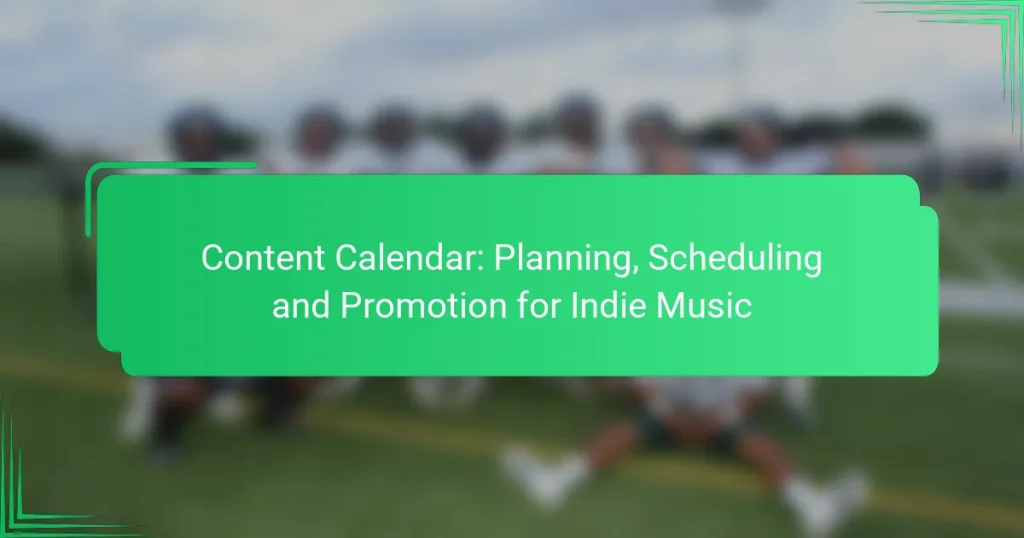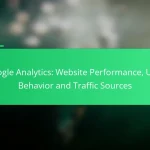Creating a content calendar for indie music is essential for effective planning, scheduling, and promotion. By organizing your content release timeline and aligning it with music launches, you can consistently engage your audience and enhance your promotional efforts. This structured approach not only streamlines your marketing strategy but also helps maintain a cohesive brand presence across various platforms.
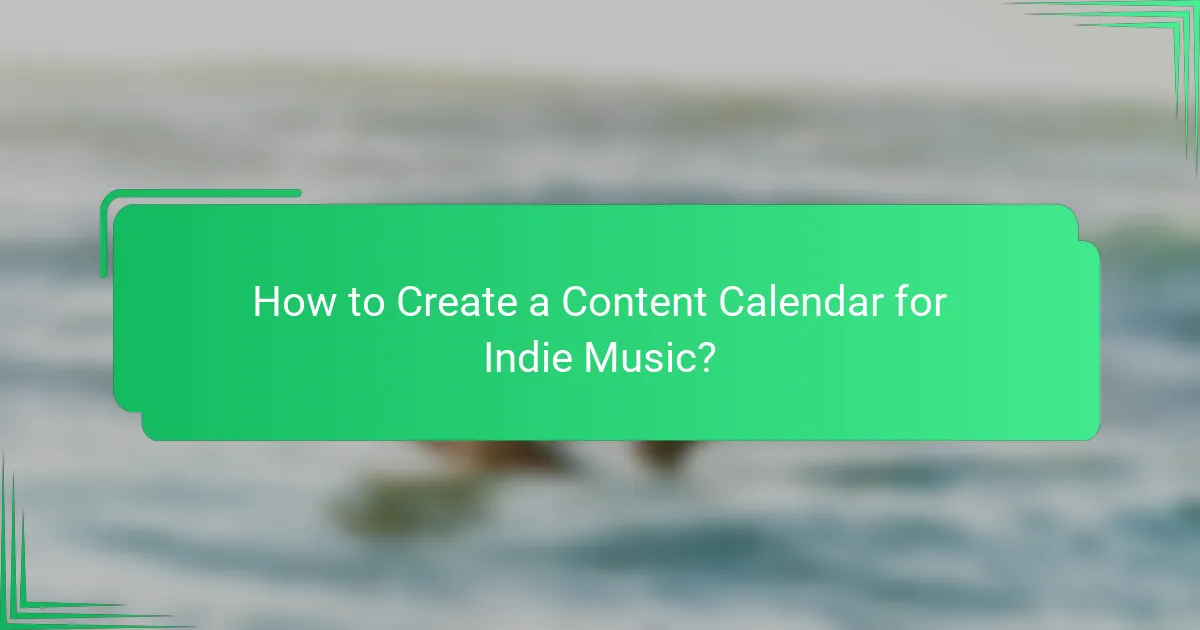
How to Create a Content Calendar for Indie Music?
Creating a content calendar for indie music involves planning, scheduling, and promoting your music effectively. This structured approach helps you stay organized and ensures you consistently engage with your audience.
Define your goals
Start by establishing clear objectives for your content calendar. Whether you aim to increase your social media following, promote an upcoming album, or engage with fans through live events, having specific goals will guide your planning process.
Consider using the SMART criteria—Specific, Measurable, Achievable, Relevant, and Time-bound—to refine your goals. For instance, instead of saying “I want more followers,” specify “I want to gain 200 new followers on Instagram in the next month.” This clarity will help you track progress and adjust strategies as needed.
Identify key dates
Pinpoint important dates that align with your music release schedule and promotional activities. This includes album release dates, music video launches, and significant events like festivals or concerts.
Incorporate industry-specific dates, such as Record Store Day or local music festivals, which can provide additional promotional opportunities. Mark these dates on your calendar to ensure you plan content around them, maximizing visibility and engagement.
Choose a format
Select a format for your content calendar that suits your workflow. Options include digital calendars, spreadsheets, or project management tools. Each format has its advantages; for example, spreadsheets allow for easy data manipulation, while project management tools offer collaboration features.
Consider using a monthly view for long-term planning and a weekly view for detailed execution. This dual approach helps you maintain a broad perspective while managing daily tasks effectively.
Use tools like Trello or Asana
Utilize tools like Trello or Asana to streamline your content calendar management. These platforms allow you to create boards or lists for different content types, set deadlines, and assign tasks to team members if applicable.
Both tools offer visual layouts that make it easy to track progress and adjust plans as needed. For instance, you can create a board for each month, with cards for individual posts, ensuring that all content is organized and deadlines are met.

What Are Effective Scheduling Strategies?
Effective scheduling strategies for indie music involve creating a consistent timeline for content release, ensuring alignment with music launches, and fostering audience interaction. These strategies help maintain engagement and maximize promotional impact.
Establish a posting frequency
Establishing a posting frequency is crucial for keeping your audience engaged. Aim for a consistent schedule, such as posting 2-3 times a week, to build anticipation and maintain visibility. Regular updates can include behind-the-scenes content, teasers, or announcements.
Consider using a content calendar to plan your posts in advance. This helps you visualize your schedule and ensures you don’t overwhelm your audience with too much content at once. Balance is key; too few posts may lead to disengagement, while too many can cause fatigue.
Align with music releases
Aligning your content schedule with music releases is essential for maximizing exposure. Plan promotional activities around the launch of new singles, albums, or music videos to capitalize on the heightened interest. For instance, share exclusive previews or countdowns leading up to the release date.
Utilize platforms like social media and email newsletters to announce your releases. Timing is important; aim to post during peak engagement hours, which can vary by platform and audience demographics. This alignment ensures your content reaches the widest audience possible when interest is at its highest.
Incorporate audience engagement
Incorporating audience engagement into your scheduling strategy enhances connection and loyalty. Encourage fans to participate through polls, Q&A sessions, or contests related to your music. This not only boosts interaction but also provides valuable feedback on what resonates with your audience.
Consider scheduling regular live streams or interactive sessions where fans can ask questions or share their thoughts. Engaging directly with your audience fosters a sense of community and can lead to increased sharing and promotion of your music.
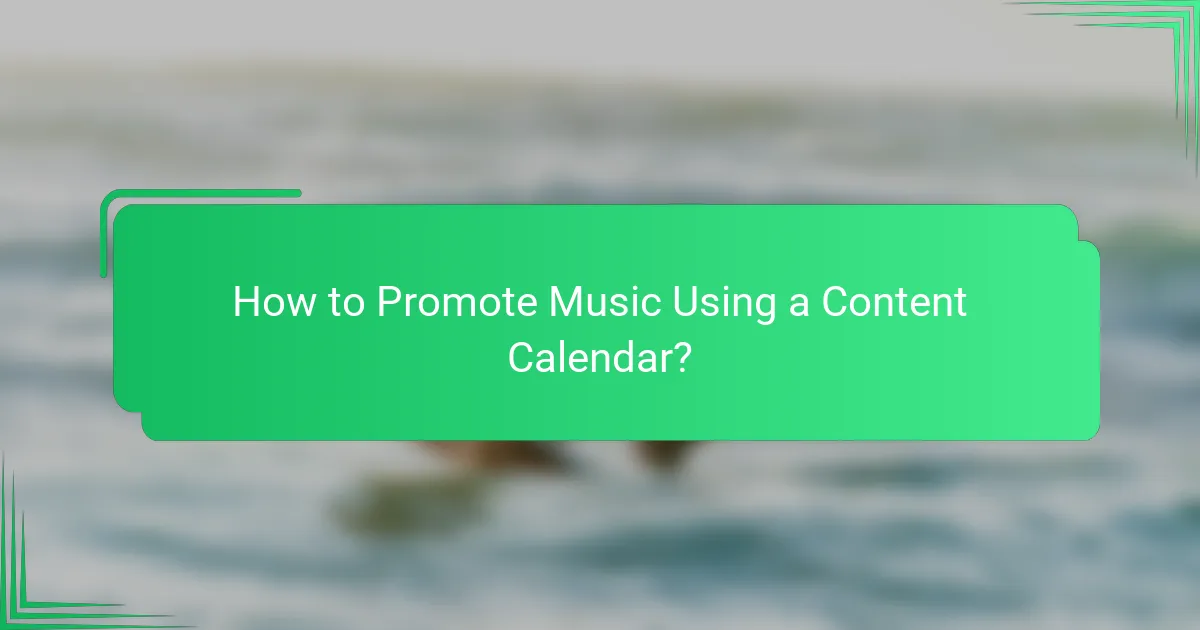
How to Promote Music Using a Content Calendar?
Promoting music effectively with a content calendar involves planning and scheduling content across various platforms to engage your audience consistently. This approach helps indie artists streamline their promotional efforts and maximize their reach while maintaining a cohesive brand presence.
Leverage social media platforms
Social media platforms are essential for promoting music and engaging with fans. Create a content calendar that outlines specific posts, including teasers, behind-the-scenes content, and announcements, tailored to each platform’s audience. Aim for a mix of promotional and interactive content to keep followers engaged.
Consider using tools like Hootsuite or Buffer to schedule posts in advance, ensuring a steady flow of content. Monitor engagement metrics to refine your strategy and focus on platforms where your audience is most active, such as Instagram, TikTok, or Facebook.
Utilize email marketing
Email marketing remains a powerful tool for indie artists to connect with their fans. Build a mailing list through your website or social media, offering exclusive content or early access to new releases as incentives. Use your content calendar to plan regular newsletters that include updates, upcoming shows, and special promotions.
Keep your emails concise and visually appealing, using engaging subject lines to improve open rates. Segment your audience based on their preferences to tailor content and increase engagement, ensuring that your communication feels personal and relevant.
Collaborate with influencers
Collaborating with influencers can significantly boost your music’s visibility. Identify influencers within your genre or niche who resonate with your target audience and propose partnerships that benefit both parties. Use your content calendar to plan joint promotions, such as social media takeovers or collaborative playlists.
When reaching out, clearly outline the mutual benefits and provide them with the necessary materials, such as high-quality images or links to your music. Monitor the performance of these collaborations to assess their impact and adjust your strategy accordingly for future partnerships.
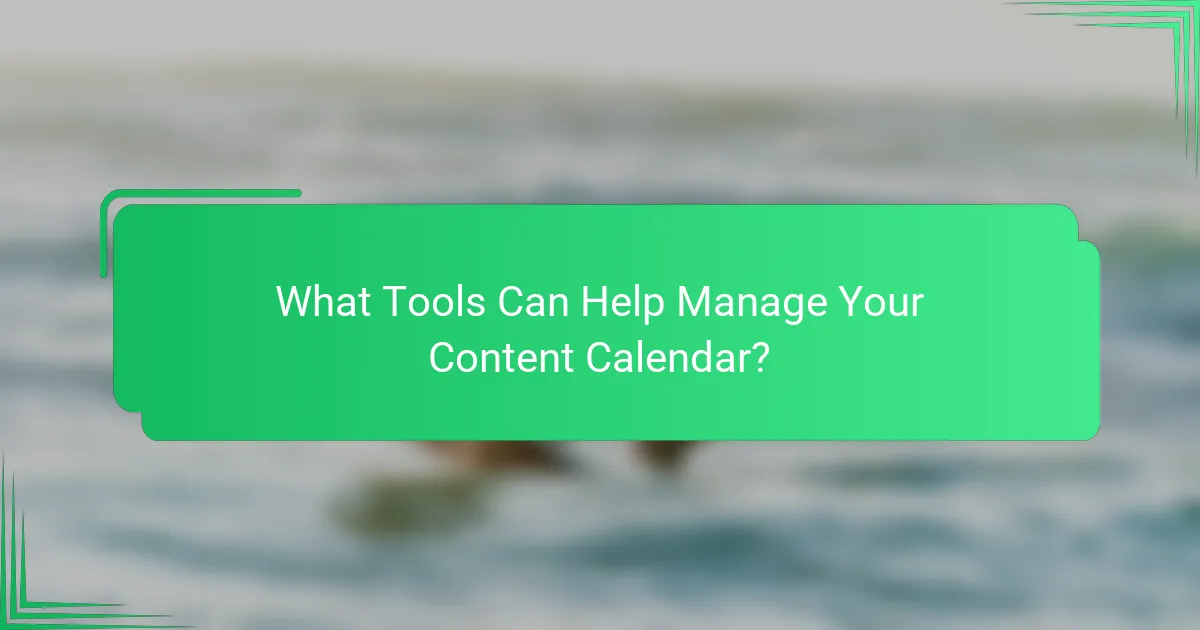
What Tools Can Help Manage Your Content Calendar?
Several tools can effectively help manage your content calendar, streamlining scheduling, social media management, and visual content creation. Using the right combination of these resources can enhance your indie music promotion efforts and keep your audience engaged.
Google Calendar for scheduling
Google Calendar is a versatile tool for scheduling your content releases and promotional activities. You can create multiple calendars for different aspects of your music career, such as releases, gigs, and social media posts, allowing for clear organization.
To maximize its effectiveness, set reminders for important dates and deadlines. You can also share your calendar with collaborators or team members, ensuring everyone stays aligned on your content strategy.
Buffer for social media management
Buffer is an excellent platform for managing your social media posts across various channels. It allows you to schedule content in advance, which helps maintain a consistent online presence without the need for daily management.
Utilize Buffer’s analytics features to track engagement and optimize your posting times. This data can guide your future content decisions, ensuring that your posts reach the maximum audience at the right moments.
Canva for visual content creation
Canva is a user-friendly design tool that enables you to create eye-catching visuals for your music promotion. With a variety of templates tailored for social media, you can easily produce graphics that align with your brand’s aesthetic.
Take advantage of Canva’s collaboration features to work with other creatives, ensuring your visuals resonate with your target audience. Regularly update your designs to keep your content fresh and engaging, reflecting any changes in your music style or branding.
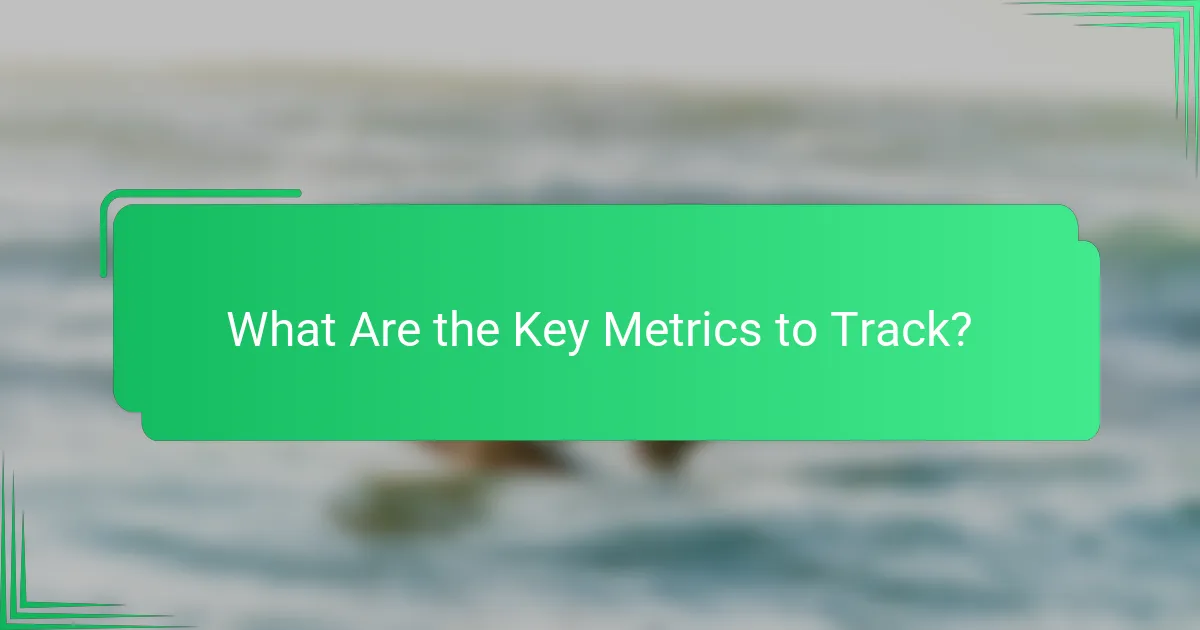
What Are the Key Metrics to Track?
Key metrics to track for indie music promotion include engagement rates, traffic sources, and conversion rates. Monitoring these metrics helps artists understand their audience’s behavior and the effectiveness of their promotional strategies.
Engagement rates
Engagement rates measure how actively your audience interacts with your content. This includes likes, shares, comments, and plays on streaming platforms. A higher engagement rate indicates that your audience finds your content compelling and relevant.
To calculate engagement rates, divide the total interactions by the total followers or views, then multiply by 100 to get a percentage. For indie artists, aiming for engagement rates between 1% to 5% is generally considered healthy, but this can vary by platform.
Common pitfalls include focusing solely on follower count instead of engagement. Prioritize creating content that resonates with your audience to boost these rates effectively.
Traffic sources
Traffic sources indicate where your audience is coming from, such as social media, search engines, or direct visits. Understanding these sources helps you identify which promotional channels are most effective for your music.
Use analytics tools to track traffic sources and assess their performance. For instance, if social media drives the most traffic, consider investing more time and resources into those platforms. A balanced approach across multiple sources often yields the best results.
Be cautious of relying too heavily on one source, as changes in algorithms or platform policies can significantly impact your traffic. Diversifying your promotional efforts can help mitigate these risks.
Conversion rates
Conversion rates measure the percentage of visitors who take a desired action, such as signing up for a newsletter or purchasing merchandise. High conversion rates indicate that your promotional efforts are effectively persuading your audience to engage further.
To calculate conversion rates, divide the number of conversions by the total visitors and multiply by 100. For indie musicians, a conversion rate of around 2% to 5% is often a realistic target, depending on the action you want your audience to take.
Focus on optimizing your calls to action and ensuring that your landing pages are user-friendly. Avoid overwhelming visitors with too many options, as this can lead to lower conversion rates.

How to Adjust Your Strategy Based on Performance?
Adjusting your strategy based on performance involves regularly reviewing your content’s effectiveness and making informed changes. This process ensures that your indie music promotion remains relevant and engaging to your audience.
Analyze data regularly
Regular analysis of your performance data is crucial for understanding what works and what doesn’t. Track metrics such as engagement rates, streaming numbers, and social media interactions to gauge audience response. Use tools like Google Analytics or social media insights to gather this data efficiently.
Establish a routine for reviewing this data, such as weekly or monthly check-ins. Look for trends over time, and compare different content types to see which resonates most with your audience. This will help you make data-driven decisions for future content planning.
Refine content types
Refining your content types based on performance insights can significantly enhance audience engagement. If certain formats, like music videos or behind-the-scenes content, receive higher engagement, consider increasing their frequency. Experiment with various styles to see what your audience prefers.
Additionally, consider diversifying your content to include live sessions, interviews, or collaborations. This not only keeps your content fresh but also attracts different audience segments. Regularly assess the performance of these new types to ensure they align with your overall strategy.
